The Getaway: Black Monday
Has Team Soho learnt from its mistakes?
The Getaway had a lot of critics. And, to be fair, it had a lot of things that needed criticising. The cars rarely lasted more than a handful of streets due to poor handling and an unforgiving damage model, and, in racing from A to B, the lack of an A-to-Z made for agonisingly slow progress. The third-person sections meanwhile - a mixture of violent gunfights and sneaking - often fell foul of camera and control issues, and in both scenarios the difficulty level often spiked beyond the abilities of the average player. Not many people lasted the journey.
However those who did stick with it, from the death of Mark Hammond's wife and his son's abduction right up to Flying Squad detective Frank Carter's climactic showdown on a doomed tanker, will probably have a different view of it. Team Soho's attempts to recreate London may have caught our attention, but in a lot of ways the story was the game's biggest triumph - in terms of its captivating narrative (evocative of proper east end gangster yarns), and Team Soho's presentation of it.
Dark Days
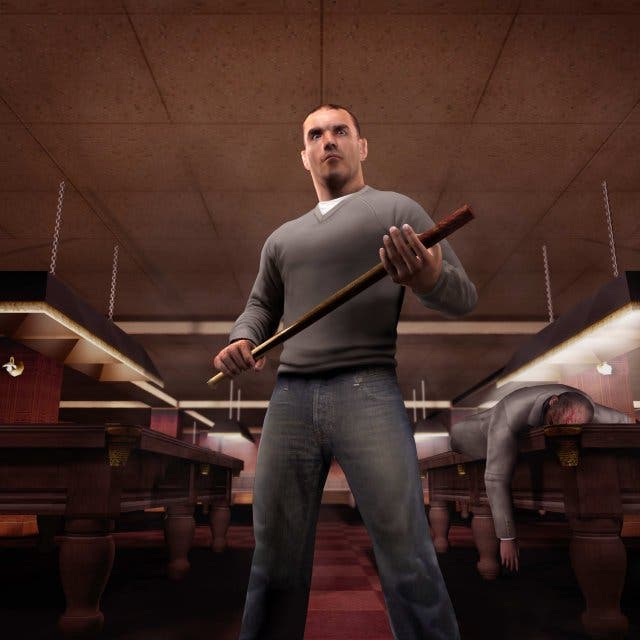
The developer's cinematic obsession hasn't dulled any despite the criticisms of two years ago. The Getaway: Black Monday (which recently appeared, fittingly enough, at the Cannes Film Festival) maintains much of the mechanical structure of its forebear, preferring to augment the original's technology and gameplay in minor but effective ways while wholesale changes are reserved for its storytelling and presentation.
In playing terms, it retains that familiar mixture of third-person action and GTA-style carjacking and driving missions, and there's still no sign of a health bar, ammo gage or mini-map. What has changed though will make a big difference to the way we play it. The game's realistically mapped London streets, apart from demonstrating another two year's worth of detail (particularly in character modelling and animation, which is exemplary), now benefit from back alleys, and with the advent of motorbikes we'll be able to take the chases off the busy main streets, whilst four-wheeled vehicles benefit from tweaked, and thankfully less realistic handling and damage models.
On two feet, we'll be able to pick up guns in the same manner as before (automatically grabbing better firearms off the deck as we move over them), making use of scenery for cover and leaning out to fire - with much greater ease and to a much greater degree than before - but once we holster the gun we'll also be able make more use of the game's hand-to-hand combat - grappling enemies and either button-mashing them to the ground, or calling upon various pre-set moves including finishing attacks like knees to the head and neck-breakers, all of which are animated well enough to resemble the average bar-room brawl. We'll also be able to smash people with pool cues before watching them tumble in ragdoll fashion.
Tell me a tale
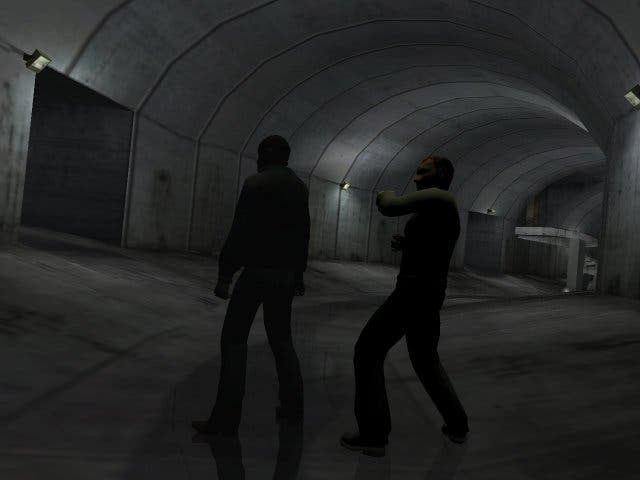
However it's the story and the way it's presented that has changed most significantly. The team has learnt a lot more about cinematic craft in the intervening two-year development period, and the camerawork, but moreover the script, clearly reflects that. Although Team Soho is still focusing on a multi-character narrative, this time we won't simply play the same story from two perspectives, we'll actually appreciate the tale as a single story with a beginning, a middle and an end - and the manner and even alignment of characters in that third and final stretch will be determined by our actions up to that point.
It's a completely different story. Although it's still set in London, two years after the events of the first game, Hammond and Carter are nowhere to be seen, and the game begins as the player assumes the role of Special Forces team leader Ben Mitchell, who has just been reinstated after a two-year suspension, and soon finds that his first Monday back is destined to be just as bleak as the day that got him kicked out. He's a slightly suspicious character, but as his nine-chapter story unfolds he makes serious headway in the fight to unmask the culprits behind this particular Black Monday, and Team Soho reckons we'll be drawn in by his story and grow to empathise with him the same way we did with Hammond and Carter.
But, in accepted Getaway fashion, his is not the whole story, and the game picks up for the second stretch with small time crook and former amateur boxer Eddie O'Connor, who wakes up dazed and seriously confused in a cellar. As it turns out, he's been involved in a routine bank heist that's gone tremendously wrong, and soon finds himself on the run not only from the police - including Mitchell - but pursued by gun-toting criminals far less concerned about the Queen's measure of justice.
Mr Black
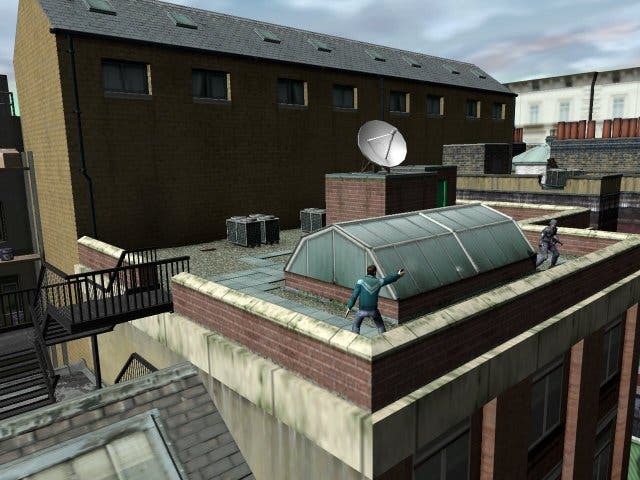
As the game progresses, we're told to expect the two storylines - and distinctive styles of the two principle characters - to converge, and not only that, we'll also be able to affect the tone and indeed outcome of the game based on our actions - whether we're compassionate, a total villain (more likely), or somewhere in between. The results are borne out in the third and final stretch, played as a mouthy young lady named Sam.
As well as a different story, the manner of storytelling has also enjoyed a shift. The team's narrative producer Katie Ellwood actually compares its manner and balance to that of Quentin Tarantino's Pulp Fiction, with key events played out from different angles and narrative perspectives, giving us further insight into events the longer we watch - or in this case play.
Apart from influencing events later on and seeing things from different perspectives, we'll also see less of the lengthy cut-scenes that featured in the first game - with Team Soho preferring to convey information interactively wherever possible. The result is best exemplified in the playable E3 demo, which sees Eddie investigate a snooker hall. Inside he finds bodies strewn everywhere, and the developer uses flash cuts of the victims meeting their fate to sharpen the already nervy tone and build up an atmosphere before the explosive pay-off - something that the team concedes would previously have been done in one long cut sequence followed by an action segment.
Going underground...

That's not to say that Team Soho has abandoned the cut-scenes, which it still believes can be put to good use. The developer is still using a cast of over 20 actors, whose facial expressions were also modelled to try and give their portrayal of the characters a bit more emotional depth, and it's still enjoyable to hear them maaafing orf. In fact, while there will be less time spent with the pad motionless on the lap, there will be multiple endings and as a result the game should benefit from several play-throughs.
Which brings us to the question of how it actually plays, and although we feel sure that fans of the original will be keen to play it on the basis of Team Soho's cinematic ambition, a lot of gamers will probably need convincing in traditional terms. And fair enough.
Playing the E3 demo level (the second chapter in Eddie's story - the developer preferred to drop us all in at the deep end this time), it's hard not to feel a sense of déjà vu. Had we not spent Thursday in the company of some of the dev team getting the full presentation, we would probably have come away immensely disappointed. It is, for all intents and purposes, largely the same sort of affair - it kicks off with an explosive cut-scene in which Eddie and Sam tumble into the vicinity of a snooker hall in their stolen car, before Eddie handcuffs Sam to the wheel (much to her profanity-ridden disgust) and makes his way inside.
Changes afoot
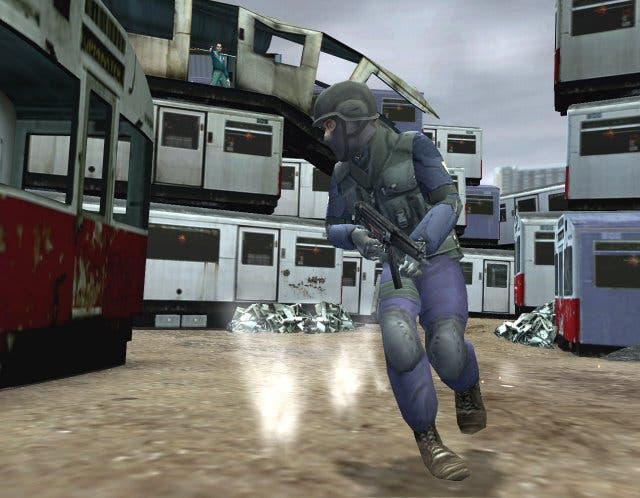
The control system is immediately guilty of many of its predecessor's notable flaws - the camera does its own thing, switching round as Eddie moves but never quite showing us enough of what lies ahead, whilst pulling the analogue stick towards us sends Eddie on a gentle trot in a circle as he turns and the camera goes the long way round. While we're still impressed by the accuracy and accessibility of the gunplay (including a new strafe function that takes over if there's no obvious target), we shouldn't have to race into a room shooting blind. At least the hand-to-hand combat lives up to its billing, and we quickly get the hang of grappling and clobbering enemies with a bit of pizzazz.
It's important to note that things will change. Game director Naresh Hirani knows the camera system is in need of revision and plans not only to have something smoother and more intuitive in place when the game is released this November, but also to have it behave appropriately depending on what the player is trying to do - whether we're in a brawl, sneaking around, up against a wall or what-have-you. Given the team's impressive camerawork elsewhere - notably in the case of scripted sequences, like the rusty stairway that tumbles from beneath Eddie's feet as he makes his way out of the snooker hall - we look forward to seeing how they get on.
There are other things to take into consideration too, including a more interactive set of increasingly detailed environments. Even without the flash cuts and dead bodies, the snooker hall is a sombre place and the atmosphere hangs heavy in the air. Cardboard boxes tumble over as Eddie brushes past them (and the physics - including ragdoll deaths - will be given greater attention before the game's release), bottles shatter as the bullets start flying, and we can even punch holes in beer barrels when Eddie's investigation takes him into the cellar.
Other moments that caught our eye largely occurred during a level we sadly didn't get to play, in which Mitch and his Special Forces unit race through a darkened house, the torches on their ends of their guns providing the only illumination in darkness - something we're told the developer will be putting to good use. At the top of the stairs, one of Mitch's colleagues takes a bullet, and the player chases the culprit outside, over rooftops and beyond, with context-sensitive vaulting and jumping coming into play as obstacles loom. As it turns out, Mitch can't manually jump nor fall between buildings, but he can lose time by running off at an acute angle and having to grab for the ledge - it's not a platformer, after all, but there has to be a limit.
Getting there
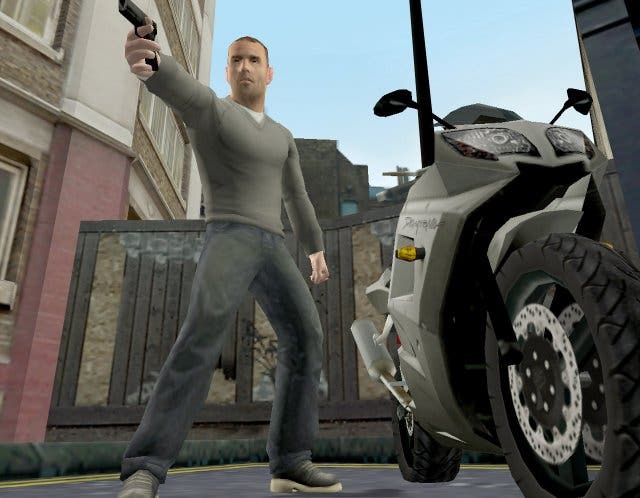
All the same, we might argue that The Getaway's most niggling flaws were a product of its insistence on avoiding gaming cliché - most notably an indicator system for vehicular navigation that never quite worked, and a health regeneration system that left our back exposed too often and forced us to stand around for minutes at a time doing nothing - generally while the AI snuck round the other way and undid all our hard leaning. And there is a worry that Team Soho's desire to create another seamless adventure could sabotage its efforts in other areas.
The health regeneration has been sped up, but there's a concern that it might lose its balance as a result. Likewise moving onto the vehicle sections, the indicator system remains, and a last minute addition of a mini-map seems unlikely. Hirani says the developer will tweak it as much as necessary, but whether it will be enough to avoid those irritating instances of circling the block or taking a wrong turn due to fuzzy indication is impossible to say at this point.
In general terms however, the car chase sections - in this case Eddie and Sam's escape from the snooker hall - are greatly improved. The initial car is a throwback to the first game - slow to pick up and a bastard to control - but once we ditched it in favour of something sportier things improved significantly. Cars are more responsive and seem to last longer, the handling is a bit more predictable, and the police AI is a bit more even-handed - going after gang-members pursuing Eddie from behind tinted windows with just as much gusto as it reserves for the player. And the motorbikes are as good as they sound - the suspension reacts very realistically, and racing down narrow alleys to evade the police is exhilarating.
We're also told to expect more set pieces within the framework of the traditional driving missions, which are no longer just a matter of going from A to B. We'll be hauled out, we'll fall foul of ambushes, we'll feel like it's more than just connecting the dots on a big and impressive recreation of the English capital. On the whole, Team Soho is gunning for an adventure in gameplay terms to match the variation and ambition of its storytelling.
That Friday feeling
The Getaway: Black Monday is in a promising state. Taken in isolation the E3 demo build isn't a massive step forward, but the team's desire to tell the story of these three characters believably and interactively, and their willingness to acknowledge criticisms levelled at the first game and put things right, overshadow any concerns we might have about it at this point. Perhaps it won't live up to that promise, perhaps it won't convert all the game's enemies, but as far as we're concerned, we've yet to hear the whole story, and we have a feeling that come November we'll be itching to do so.
To learn more about The Getaway: Black Monday, we'd encourage you to read through our interview with game director Naresh Hirani and narrative producer Katie Ellwood, conducted during E3, which you can find elsewhere on the site.

